Miracle At The Border: Finding Goodness In Reynosa – First Person
Lourdes “Lulu” Gonzalez, four nuns, and volunteers do what governments seem incapable of doing: they treat migrants with respect, provide basic housing, serve food, deliver emergency care, and help migrants enter the United States legally. They do not think of themselves as heroes, but they accomplish what many would consider impossible. Thousands of migrants, battered by journeys through hellish places like the Darién Gap in Colombia and Panama, survive because of many generous souls.
This is a story about what happens when a few people make dreams come true. Let’s start with Lulu, an American who has lived in Mexico for 28 years and who is a key figure in the care of migrants in Reynosa, Mexico.
Everyone seems to know Lulu. If a Honduran has Stage 4 cancer and wants to apply for an exemption from Title 42 (the Trump-era law that closed U.S. borders), people say, “contact Lulu!” The woman named Cely fled the men that “disappeared” her husband should go to Casa Lulu. The parents of the three-year-old whose kidneys failed had better call Lulu.
Immigrant helpers include the Catholic sisters at the Casa del Migrante who house 200 women and children in a safe facility. Pastor Héctor and his wife, Marilu, founded the Senda de Vida and offer food, beds, and transportation. Doctors and nurses from the Global Response Medicine provide free health care. There are also lawyers and volunteers like Ginny Gray from Washington, D.C. Readers who would like to support the work of migrant advocates, should check the website of the Angry Tias and Abuelas.
Before traveling to Reynosa, I had done months of remote interviews, and, as I came to know Lulu’s team, I decided I wanted to work in person. When it came time to pay for my air ticket, I hesitated, however, because I was unnerved by stories of kidnappings. Reynosa is not San Miguel de Allende, a colonial city known for its arts scene; in fact, the U.S. State Department’s warning could hardly be more fear-inducing: “Do Not Travel To Tamaulipas state due to crime and kidnapping (sic).”
Lulu assured me that I would be protected by her rosary, the Virgin Mary, and good luck: “Tito, there’s no need to be concerned. Spend your nights in a Texas hotel, hire a car to take you to the border, walk over the bridge, and wait on the plaza. Just don’t walk anywhere. No te preocupes! No hay ningún problemo! Don’t worry! There’s no problem.”
I call Lyft and get Samar, who picks me up at the Best Western in McAllen a 9:30. His first words are, “Hi! I am trying to pay off my $13,000 debt because I have Stage 4 bone cancer and the transplant failed. I get chemo on Monday. But all is good!”
I tell him about the migrants, and he says, “You know what? I will not accept your money, because what you are doing is good. I cannot charge you. I will pick you up this afternoon and every day from now on. All free. Just call.”
He drops me off at Whataburger, a which is a quarter mile from the border. I put four quarters in a turnstile, leave the United States, and walk under razor wire and over the Rio Grande.
I pass Mexican soldiers with long rifles, retrieve my book bag from an inspection machine, and head to the plaza where taxi drivers smoke long cigarettes.
From her red SUV’s window, Lulu’s arm is waving, so I climb down the plaza steps. She drives down a street that smells like burning tires and she parks. We climb up a steep embankment called “el bordo” and pass out the clinic’s address to long lines of Haitian migrants, some of whom clutch babies.
Then we head to Casa Clinica, a.k.a. “Casa Lulu.” My job is to interview 20-30 Haitian, Honduran, and Salvadoran migrants each day. I greet them with “Buenos días! ¿Como están?” or “Bonjou! Komon ou ye?” and remind them to put on their masks. I review documents and upload passports while Lulu and her assistant, Luis, ask about medical problems. Then we double check the migrants’ cell numbers, and I click “SUBMIT.” The form goes to a lawyer in Texas who transmits the information to the Customs and Border Patrol (CBP) in Hidalgo. If the application is approved, the migrants get a call. They get on a yellow U.S. school bus at Senda 1 and ride to the border. In McAllen, they get supplies from Catholic Charities and take a bus or plane to the cities where their sponsors live. In the year that follows, they must attend a hearing to determine if they can stay in the U.S.
In the political battles about migration, human beings are often forgotten. I encountered hundreds of hopeful people from four continents, and I want to introduce the reader to a few. Let’s start with a three-year-old Haitian girl connected to an oxygen mask in Reynosa General Hospital. Leticia (name changed) gasps for breath; her body is swollen; her kidneys have failed; and she is hours from death. Mexican doctors want to transfer her to a U.S. hospital, but Leticia’s parents do not have permission to cross. Lulu tells the mother, “Don’t worry. I’ll find a way. Trust me. We will do this together.”
The doctors say the child will die unless she goes to a Texas hospital, so Lulu goes into emergency mode. We drive to the hospital, and she convinces the social worker discharge Leticia. The child emerges, squeezing a bottle in her mother’s arms. Lulu takes the family to the border crossing, and the CBP hands out I-94 permits. Leticia is taken to a hospital in McAllen and then is transferred to a pediatric hospital in Corpus Christi.
Three days later, Lulu calls me and sounds excited. “Call Leticia’s mom!!!” I use WhatsApp video and can see Leticia playing in a crib. She has been disconnected from the respirator, and her mother is thrilled to tell me that, “Leticia is OK, and tomorrow we are going to take a bus to Maryland!”
I say good-bye and have to catch my breath. I can scarcely believe that Leticia was hours from death, but now she is healthy and headed to a home in the U.S. I tell Lulu how proud I am, but she says, “I did nothing special. Everyone counts, even the smallest ones.”
It would have been easy to let Leticia die, but Lulu gave Leticia her best shot, and a miracle happened. With some luck, Leticia will grow up and maybe become a social worker, lawyer, doctor, immigrant advocate or congresswoman.
One day, Lulu takes me to “Senda 2,” a former baseball field surrounded by concrete block walls, steel gates and barbed wire. Over 1,000 people live here and another 5,000 are in other shelters or on the streets. Lulu and I cross between lines of tents, tarps and tienditas (little stores) selling soft drinks. We arrive at a gigantic kitchen were a Chef Jenny gives us a hug. She is from Guerrero, Mexico, and tells me that, before arriving in Reynosa, she had never cooked for more than two people. “When I got here, I watched and imitated what others did,” she said. “I order pallets of vegetables, but today, I have nothing to offer but tubs of rice.”
In the days that follow, I interview people from Haiti, Nicaragua, Guatemala, and Honduras. Each story is worth a book, but a sentence or two will have to suffice. A woman who was raped and is being stalked by her assailant applies for an exemption. A teenager who was sold for sex by her father applies. Cases include a child who has blood in his urine, a man with Hansen’s disease (leprosy), a woman who is hemorrhaging, and a man who has hard lumps in his testicles and neck, a woman with Stage 4 colon cancer, and a man with appendicitis. There is the boy who was raped and a man with herniated discs. A woman has eclampsia might have pulmonary edema. It is a daunting to hear the stories and see the tears.
One day, I text our Texas lawyer to see how things are going. He writes me that, “almost 8,000 people are living in Reynosa, none of whom are able to work or send their kids to school. Volunteers are scared to work in a setting like this one. In light of all that, it’s wonderful you made the effort to be here. 100% of your clients get across the border. I hope you know what a difference you make.”
The next day, I work with the nuns at the Casa del Migrante. Esmeralda, a teenager with white and black dreadlocks, catches my eye because she is teaching children to draw. She speaks Spanish and Creole and offers to translate for a Haitian whose mastectomy wound is infected.
A few days later, we are driving around Reynosa, and I ask Lulu why she decided to drop her corporate career and work with migrants. She said changed her career due to a mysterious encounter 20 years earlier: “I was waiting in a line when someone tapped me on the shoulder. I turned around and a man I’d never seen before said, ‘You’re named for Lourdes, the French town where a girl saw the Virgin Mary. Did you know there’s a shrine honoring Lourdes in Texas?’
“I shook my head, and he disappeared. Then I told my family, and they said I was ‘seeing things.’ Later, I went to see the shrine and felt I was in presence of Bernadette Soubirous, the girl who saw the Virgin Mary. She helped me see that my vocation was to work with migrants.”
One day I work at the Casa Migrante, a home for 200 migrant women and children. Sister María is in charge of the team that manages food and medical needs. The first client is Cely, whose husband “was disappeared” in southern Mexico. She tells me she fled her hometown and took a bus to Reynosa. I fill out her encuesta, and, an hour later, she gets a call telling her and her children to report to the CBP.
I tell María the good news and María whispers, “You must have strong skills, because Cely immediately got permission to cross.” I turn to her and say, “I am strong, because I ate the mango pie and apple salad you served for lunch!” María picked up a guava about the size of a baseball and said, “I think I am going to bake a guava pie tomorrow. I’ll make sure you get a large slice.”
On my last day at the Casa del Migrante, Lulu lets out a cry of joy when she bites down on Jesus’s foot. It is Three Kings Day, and we are eating a circular cake covered with figs and dried fruit. Inside is a small Jesus figure. Whoever finds Jesus is lucky, but the discovery means you have to dress the baby and make tamales for the Día de la Candelaria. The clothing must be impeccable, a challenge since Jesus is only an inch tall.
As a good-bye present, the sisters gave me the Miraculous Medal and told me that the medal saved them when they were kidnapped. I keep my medal in my pocket.
Note: All photos are by the author Dr.Tito Craige

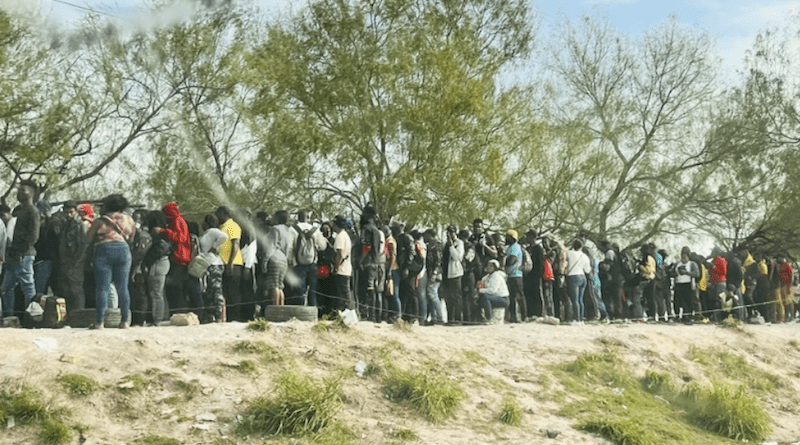
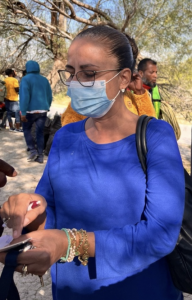
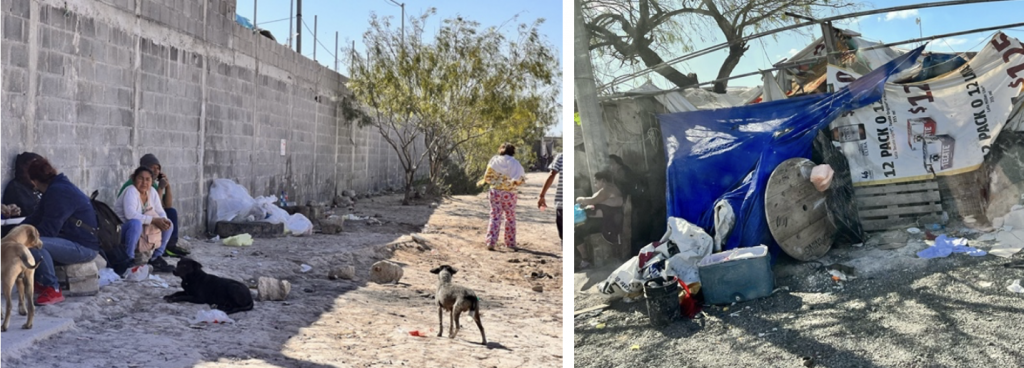
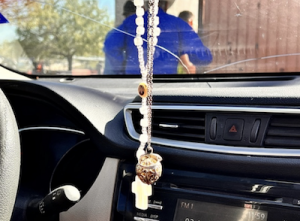
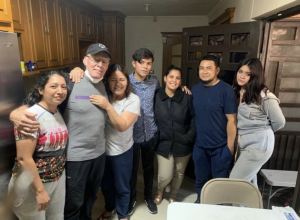
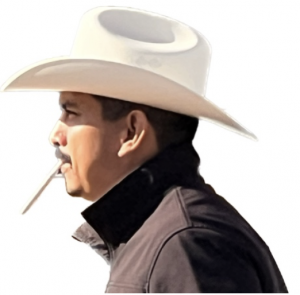
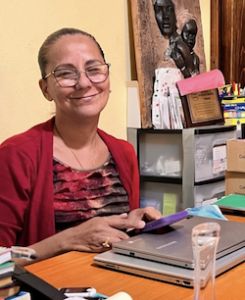
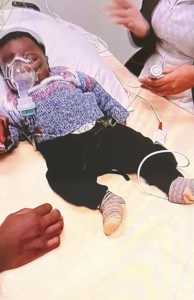
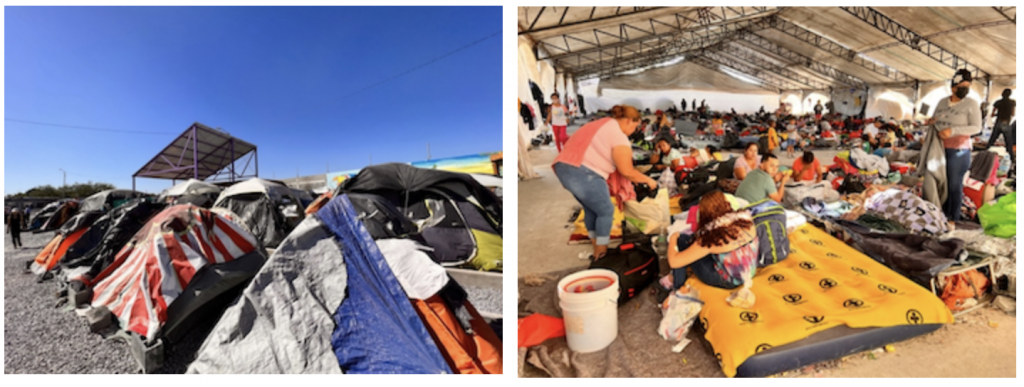
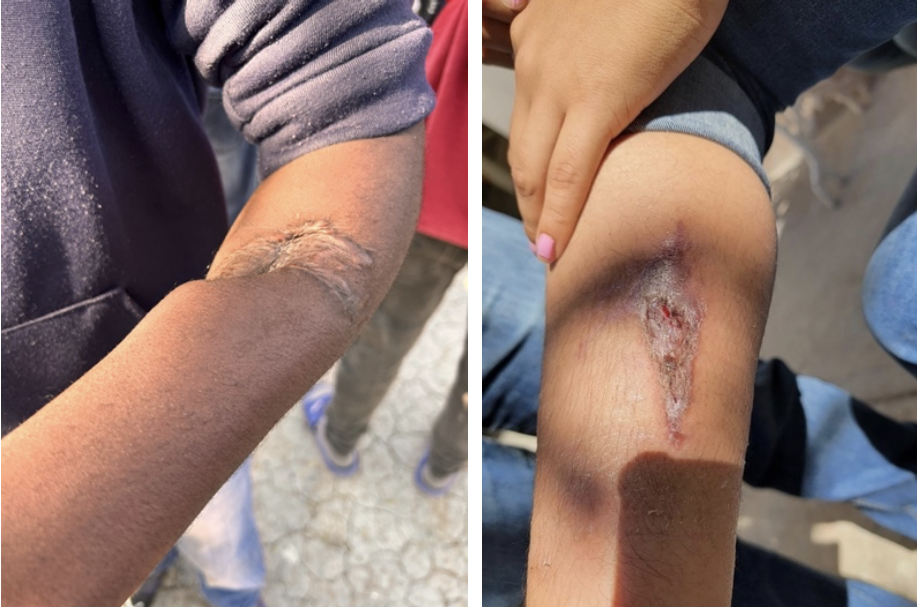
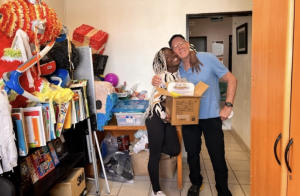
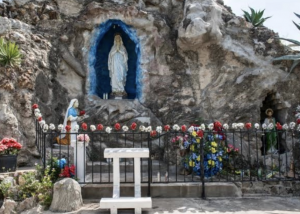
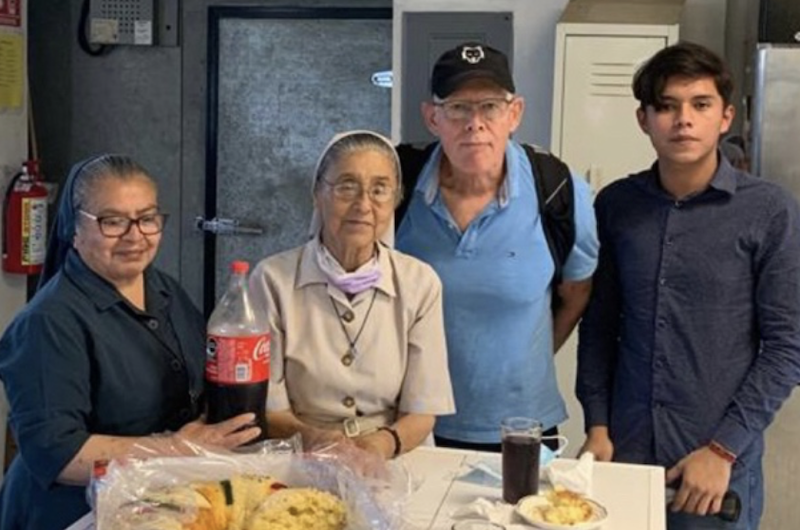
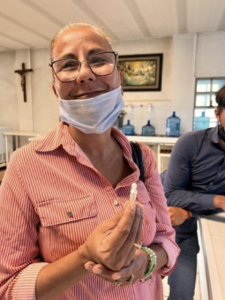
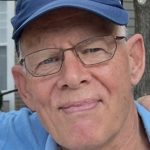
I am in awe of you, Dr. Tito – you are the embodiment of what a caring human being should look like. May you be richly rewarded for your huge heart!
Hi Tito, this is Susan LoAlbo, I am Bryan Smith’s friend from Pittsburgh.
Tito, this undertaking is a remarkable effort…….
Your wholehearted devotion shows the depths of your commitment.
You are selfless and courageous!
Keep Safe kiddo!
Tito! This is Steve, your traveling companion in the Philippines. It’s been way too long. I was just talking to Tim M in Durham and we’d both like to get back in touch with you. Hope you get this message!